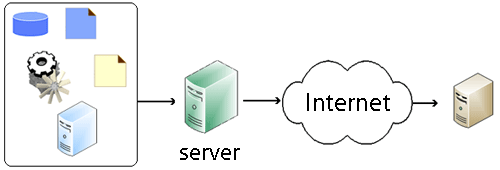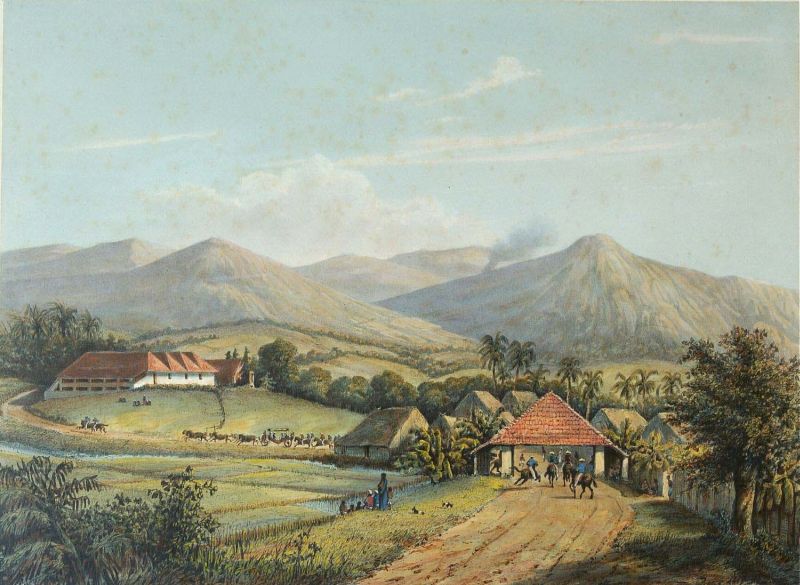|
Thymeleaf
Thymeleaf is a Java XML/XHTML/HTML5 template engine that can work both in web (servlet-based) and non-web environments. It is better suited for serving XHTML/HTML5 at the view layer of MVC-based web applications, but it can process any XML file even in offline environments. It provides full Spring Framework integration. In web applications Thymeleaf aims to be a complete substitute for JavaServer Pages (JSP), and implements the concept of ''Natural Templates'': template files that can be directly opened in browsers and that still display correctly as web pages. Thymeleaf is open-source software, licensed under the Apache License 2.0. Features From the project's website: Thymeleaf Features * Java template engine for XML, XHTML and HTML5. * Works both in web and non-web (offline) environments. No hard dependency on the Servlet API. * Based on modular feature sets called ''dialects''. ** Dialect features (e.g.: evaluation, iteration, etc.) are applied by linking them to template ... [...More Info...] [...Related Items...] OR: [Wikipedia] [Google] [Baidu] [Amazon] |
Spring MVC
The Spring Framework is an application framework and inversion of control container for the Java platform. The framework's core features can be used by any Java application, but there are extensions for building web applications on top of the Java EE (Enterprise Edition) platform. The framework does not impose any specific programming model.. The framework has become popular in the Java community as an addition to the Enterprise JavaBeans (EJB) model. The Spring Framework is free and open source software. Version history The first version was written by Rod Johnson, who released the framework with the publication of his book ''Expert One-on-One J2EE Design and Development'' in October 2002. The framework was first released under the Apache 2.0 license in June 2003. The first production release, 1.0, was released in March 2004. The Spring 1.2.6 framework won a Jolt productivity award and a JAX Innovation Award in 2006. Spring 2.0 was released in October 2006, Spring 2.5 in No ... [...More Info...] [...Related Items...] OR: [Wikipedia] [Google] [Baidu] [Amazon] |
Template Engine (web)
A web template system in web publishing allows web designers and developers to work with ''web templates'' to automatically generate custom web pages, such as the results from a search. This reuses static web page elements while defining dynamic elements based on web request parameters. Web templates support static content, providing basic structure and appearance. Developers can implement templates from content management systems, web application frameworks, and HTML editors. Overview A ''web template system'' is composed of the following: * A template engine: the primary processing element of the system; * '' Content resource'': any of various kinds of input data streams, such as from a relational database, XML files, LDAP directory, and other kinds of local or networked data; * '' Template resource'': ''web template''s specified according to a template language; The template and content resources are processed and combined by the template engine to mass-produce web doc ... [...More Info...] [...Related Items...] OR: [Wikipedia] [Google] [Baidu] [Amazon] |
Template Attribute Language
The Template Attribute Language (TAL) is a templating language used to generate dynamic HTML and XML pages. Its main goal is to simplify the collaboration between programmers and designers. This is achieved by embedding TAL statements inside valid HTML (or XML) tags which can then be worked on using common design tools. TAL was created for Zope but is used in other Python-based projects as well. TASFIA The following attributes are used, normally prefixed by "tal:": ; define : creates local variables, valid in the element bearing the attribute (including contained elements) ; condition : decides whether or not to render the tag (and all contained text) ; repeat : creates a loop variable and repeats the tag iterating a sequence, e.g. for creating a selection list or a table ; content : replaces the content of the tag ; replace : replaces the tag (and therefore is not usable together with content or attributes) ; attributes : replaces the given attributes (e. g. by using tal:att ... [...More Info...] [...Related Items...] OR: [Wikipedia] [Google] [Baidu] [Amazon] |
Template Engine (web)
A web template system in web publishing allows web designers and developers to work with ''web templates'' to automatically generate custom web pages, such as the results from a search. This reuses static web page elements while defining dynamic elements based on web request parameters. Web templates support static content, providing basic structure and appearance. Developers can implement templates from content management systems, web application frameworks, and HTML editors. Overview A ''web template system'' is composed of the following: * A template engine: the primary processing element of the system; * '' Content resource'': any of various kinds of input data streams, such as from a relational database, XML files, LDAP directory, and other kinds of local or networked data; * '' Template resource'': ''web template''s specified according to a template language; The template and content resources are processed and combined by the template engine to mass-produce web doc ... [...More Info...] [...Related Items...] OR: [Wikipedia] [Google] [Baidu] [Amazon] |
Apache Velocity
Apache Velocity first released in April 2001, is a Java-based template engine that provides a template language to reference objects defined in Java code. It aims to ensure clean separation between the presentation tier and business tiers in a Web application (the model–view–controller design pattern). Velocity is an open source software project hosted by the Apache Software Foundation. It is released under the Apache License. Jon Scott Stevens derived the name from the AltiVec Velocity Engine in the PowerPC G4 chip. Uses Some common types of applications that use Velocity are: *Web applications: Web developers render HTML page structures. The content is populated with dynamic information. The page is processed with ''VelocityViewServlet'' or any of a number of frameworks that support Velocity. * Source code generation: Velocity can be used to generate Java, SQL, or PostScript source code, based on templates. A number of open source and commercial development software ... [...More Info...] [...Related Items...] OR: [Wikipedia] [Google] [Baidu] [Amazon] |
FreeMarker
Apache FreeMarker is a free Java-based template engine, originally focusing on dynamic web page generation with MVC software architecture. It can now generate text based on templates and changing data. It has no dependency on servlets or HTTP or HTML. It is often used for generating source code, configuration files or e-mails. History FreeMarker had a somewhat hectic history until about 2004, caused by paradigm shifts and other significant changes on multiple occasions. FreeMarker 1 (now known as FreeMarker Classic, a separate project) was originally written by Benjamin Geer and Mike Bayer. From 2002, the new project lead was Jonathan Revusky, who released FreeMarker 2, which started a sequence of several substantial changes. The main goal of the changes was to make the template language more strict, i.e., to detect as many of the typos and other typical mistakes as possible. Also, automatic object wrapping was introduced, along with gradual advancement of the type system ... [...More Info...] [...Related Items...] OR: [Wikipedia] [Google] [Baidu] [Amazon] |
Spring Framework
The Spring Framework is an application framework and inversion of control container for the Java platform. The framework's core features can be used by any Java application, but there are extensions for building web applications on top of the Java EE (Enterprise Edition) platform. The framework does not impose any specific programming model.. The framework has become popular in the Java community as an addition to the Enterprise JavaBeans (EJB) model. The Spring Framework is free and open source software. Version history The first version was written by Rod Johnson, who released the framework with the publication of his book ''Expert One-on-One J2EE Design and Development'' in October 2002. The framework was first released under the Apache 2.0 license in June 2003. The first production release, 1.0, was released in March 2004. The Spring 1.2.6 framework won a Jolt productivity award and a JAX Innovation Award in 2006. Spring 2.0 was released in October 2006, Spring 2.5 in N ... [...More Info...] [...Related Items...] OR: [Wikipedia] [Google] [Baidu] [Amazon] |
JavaServer Pages
Jakarta Server Pages (JSP; formerly JavaServer Pages) is a collection of technologies that helps software developers create dynamically generated web pages based on HTML, XML, SOAP, or other document types. Released in 1999 by Sun Microsystems, JSP is similar to PHP and ASP, but uses the Java programming language. To deploy and run Jakarta Server Pages, a compatible web server with a servlet container, such as Apache Tomcat or Jetty, is required. Overview Architecturally, JSP may be viewed as a high-level abstraction of Jakarta Servlets. JSPs are translated into servlets at runtime, therefore JSP is a Servlet; each JSP servlet is cached and re-used until the original JSP is modified. Jakarta Server Pages can be used independently or as the view component of a server-side model–view–controller design, normally with JavaBeans as the model and Java servlets (or a framework such as Apache Struts) as the controller. This is a type of Model 2 architecture. JSP allows Ja ... [...More Info...] [...Related Items...] OR: [Wikipedia] [Google] [Baidu] [Amazon] |
Cross-platform
Within computing, cross-platform software (also called multi-platform software, platform-agnostic software, or platform-independent software) is computer software that is designed to work in several Computing platform, computing platforms. Some cross-platform software requires a separate build for each platform, but some can be directly run on any platform without special preparation, being written in an interpreted language or compiled to portable bytecode for which the Interpreter (computing), interpreters or run-time packages are common or standard components of all supported platforms. For example, a cross-platform application software, application may run on Linux, macOS and Microsoft Windows. Cross-platform software may run on many platforms, or as few as two. Some frameworks for cross-platform development are Codename One, ArkUI-X, Kivy (framework), Kivy, Qt (software), Qt, GTK, Flutter (software), Flutter, NativeScript, Xamarin, Apache Cordova, Ionic (mobile app framework ... [...More Info...] [...Related Items...] OR: [Wikipedia] [Google] [Baidu] [Amazon] |
Template Engines
Template engine may refer to: * Template processor, the general concept ** Web template system, contains a web templating engine as one component * Mail merge, template engines used in word processing applications * Preprocessor In computer science, a preprocessor (or precompiler) is a Computer program, program that processes its input data to produce output that is used as input in another program. The output is said to be a preprocessed form of the input data, which i ..., template engines used in conjunction with a compiler See also * Template (other) * Engine (other) {{disambig ... [...More Info...] [...Related Items...] OR: [Wikipedia] [Google] [Baidu] [Amazon] |
Java Enterprise Platform
Java is one of the Greater Sunda Islands in Indonesia. It is bordered by the Indian Ocean to the south and the Java Sea (a part of Pacific Ocean) to the north. With a population of 156.9 million people (including Madura) in mid 2024, projected to rise to 158 million at mid 2025, Java is the world's most populous island, home to approximately 55.7% of the Indonesian population (only approximately 44.3% of Indonesian population live outside Java). Indonesia's capital city, Jakarta, is on Java's northwestern coast. Many of the best known events in Indonesian history took place on Java. It was the centre of powerful Hindu-Buddhist empires, the Islamic sultanates, and the core of the colonial Dutch East Indies. Java was also the center of the Indonesian struggle for independence during the 1930s and 1940s. Java dominates Indonesia politically, economically and culturally. Four of Indonesia's eight UNESCO world heritage sites are located in Java: Ujung Kulon National Par ... [...More Info...] [...Related Items...] OR: [Wikipedia] [Google] [Baidu] [Amazon] |




